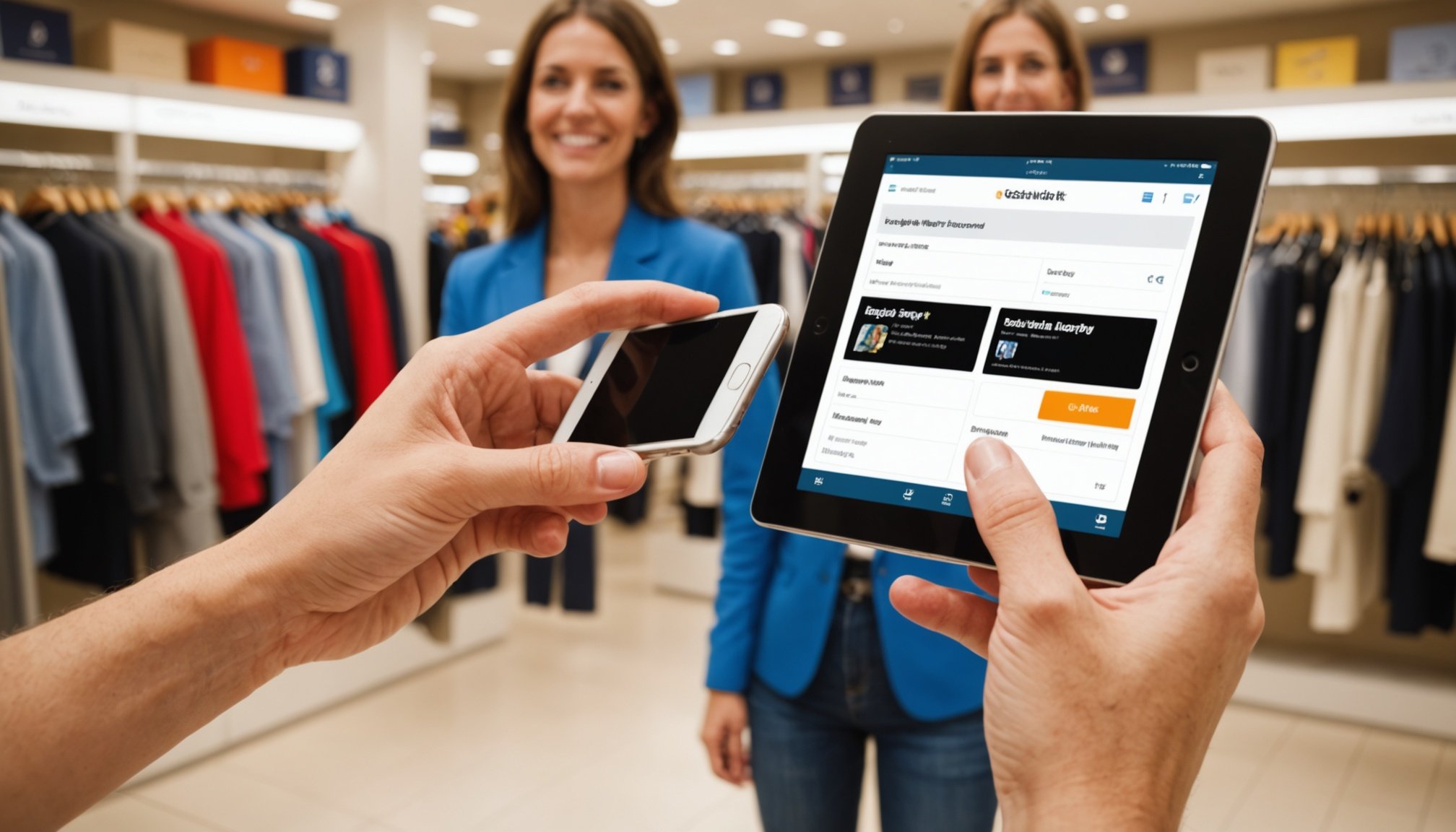Overview of Loyalty Programs in UK Retail
Loyalty programs play a crucial role in the UK retail landscape, enhancing customer relationships through targeted engagement strategies. At their core, these programs are designed to reward customers for their continued patronage, fostering a deeper connection between the consumer and retailer. As UK consumers become more discerning, the effectiveness of loyalty schemes grows more vital for businesses.
Recent trends indicate a shift in consumer behaviour, with many prioritising digital interactions and personalisation. This evolution necessitates adaptive customer engagement strategies to maintain relevance. Retailers in the UK have responded by integrating technology and data analytics into their loyalty programs, providing tailored rewards and experiences that resonate with the modern shopper.
Have you seen this : Transforming supply chain clarity: uk businesses” essential guide to leveraging blockchain innovations
The benefits of implementing loyalty programs are manifold. Retailers can expect increased customer retention rates, as these schemes create a sense of belonging and appreciation among customers. Moreover, loyalty programs offer valuable insights into consumer preferences and purchasing patterns. This data equips retailers with the tools to refine their offerings and marketing efforts effectively.
Designing a Customer-Centric Loyalty Program
Creating a customer-centric design for loyalty programs involves several critical elements. First and foremost, a successful loyalty program structure should be built around understanding your customers’ needs and preferences. This begins with gathering and incorporating customer feedback to ensure the program resonates with its users. By actively listening to your customers, you can tailor the program more effectively to their lifestyle and spending habits.
In the same genre : Unlocking Sustainable Farming: A Guide to Adopting Regenerative Agriculture in the UK
Moreover, simplicity and ease of use are vital components. A program that is overly complicated or difficult to navigate will likely deter participation. Instead, aim for an interface that is intuitive and user-friendly, making the experience seamless for participants. A clear and direct user experience ensures that customers are more likely to engage regularly with the program, ultimately fostering brand loyalty.
Consider these elements when developing your program:
- Incentive structure: Align rewards with what customers value.
- Accessibility: Ensure your program is easily accessible on various platforms.
- Feedback loops: Regularly update the program based on user input.
By focusing on these key areas, you ensure that the loyalty program not only attracts customers but also retains them through a positive and engaging experience.
Segmenting Your Audience for Effective Targeting
Effectively targeting an audience requires insightful customer segmentation and robust data analysis. In retail, segmenting involves identifying groups of customers based on various characteristics, which allows for more personalized marketing strategies. One method is behavioural segmentation, focusing on purchase history to tailor marketing efforts. Another is geographic segmentation, which caters to customers’ regional preferences.
When these methods are applied diligently, businesses can develop tailored loyalty rewards. By analysing customer data, retailers can introduce programs that resonate with specific segments. For example, offering exclusive discounts or early access to sales can enhance customer experience and retention.
Several case studies highlight successful segmented loyalty programs. For instance, a retail giant restructured its loyalty program by segmenting customers into tiers based on spending habits. This approach not only improved customer satisfaction but also increased the company’s revenue by targeting high-value customers with exclusive offers.
Such practical applications demonstrate the immense potential of customer segmentation when combined with thorough data analysis. Businesses can foster stronger relationships and drive growth through personalized marketing efforts, ultimately enhancing their competitive edge in a crowded marketplace.
Technology Integration for Loyalty Programs
Incorporating technology solutions into loyalty programs is essential for efficient management and enhanced customer engagement. CRM systems are particularly important; they enable businesses to maintain comprehensive records of customer preferences, purchase history, and interaction data. This empowers UK retailers to personalise rewards and improve customer satisfaction.
Popular CRM systems utilised by UK retailers include platforms such as Salesforce, HubSpot, and Microsoft Dynamics. These tools offer features like automated customer interaction tracking, real-time analytics, and efficient, user-friendly interfaces. By leveraging these platforms, retailers can streamline operations and reduce the risk of redundant or outdated customer information.
The rise of mobile apps has also transformed the way loyalty programs are managed. They offer users the convenience of accessing their rewards and tracking their points from anywhere at any time. Mobile apps enhance customer engagement by enabling retailers to send personalised promotions and reminders directly to customers’ smartphones. This technology fosters continuous interaction with customers, encouraging their loyalty and increasing participation in rewards programs.
For retailers, integrating these technology solutions not only refines program management but also provides invaluable insights into shopping behaviour, helping tailor future strategies for enhanced effectiveness.
Compliance with UK Regulations
Understanding UK regulations is crucial for loyalty programs to maintain legal and ethical standards. Key regulations include the General Data Protection Regulation (GDPR) and consumer protection laws. These frameworks ensure that customer data is processed fairly and responsibly.
GDPR Compliance
GDPR mandates businesses to safeguard personal data, requiring transparent data handling procedures. For loyalty programs, this means obtaining explicit consent from consumers before collecting data and providing options for data access or deletion. Implementing encryption and regular audits are effective strategies to ensure compliance.
Consumer Protection Laws
Consumer protection laws demand that loyalty programs maintain honesty in advertising and do not impose unfair terms on participants. Transparency about rewards redemption and program changes is essential to meet these requirements.
Consequences and Mitigation
Non-compliance with UK regulations can lead to severe penalties, including substantial fines and reputational damage. To mitigate these risks, businesses should:
- Conduct regular compliance audits
- Train staff on regulatory requirements
- Develop a clear privacy policy
Adopting these best practices ensures that loyalty programs not only comply with legal standards but also build trust with consumers.
Measuring Success and Program Effectiveness
Understanding how well a program performs requires careful attention to program metrics. These are essential tools in assessing a loyalty program’s success and include various KPIs that track performance.
To evaluate effectiveness, it’s important to define specific KPIs such as customer retention rates, purchase frequency, and average transaction values. These metrics help quantify success and offer actionable insights. Gathering pertinent data involves employing methods like surveys, point-of-sale data analysis, and customer feedback. Collecting and analyzing such program data is crucial for determining whether objectives are being met and what areas need attention.
Moreover, the pursuit of excellence doesn’t stop once the data is collected. Continuous improvement strategies are vital and are informed by regular performance evaluations. This might involve refining the success evaluation process, adjusting loyalty tiers, or introducing new incentives. By consistently revisiting and updating program metrics, businesses stay aligned with customer expectations and market trends. This proactive approach ensures that programs remain relevant and effective, fostering long-term loyalty and engagement.
Case Studies of Successful Loyalty Programs in the UK
Exploring case studies allows us to understand both unique aspects and common trends of successful loyalty programs in the UK.
One standout retail success story is the loyalty program by Tesco, known as Clubcard. Through an in-depth analysis, it’s evident that Tesco integrates customer data with their Clubcard, enabling targeted marketing. Leveraging data this way enhances customer engagement and ensures personalised experiences, ultimately boosting sales.
Other notable examples include the Boots Advantage Card and the Nectar program. Each showcases distinct best practices: Boots excels with point-based redemption models, while Nectar offers a coalition loyalty model that benefits from partnerships.
Key takeaways from these programs highlight the necessity of understanding consumer behaviour and adapting strategies accordingly. By comparing different approaches, such as Tesco’s data-centric tactics and Boots’ reward model, businesses can tailor their strategies for the UK market.
Lessons learned emphasise that successful programs are flexible, consumer-focused, and innovative, providing continuous value to customers. The diverse strategies underscore the importance of aligning program elements with both brand goals and customer expectations to achieve enduring success.











